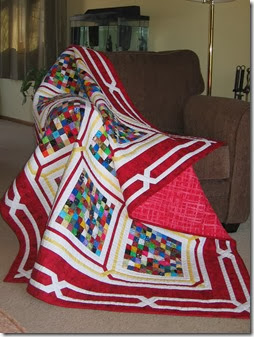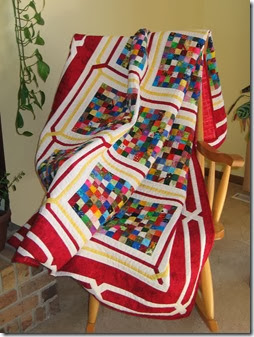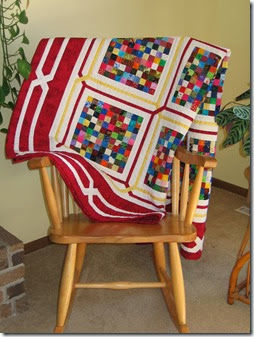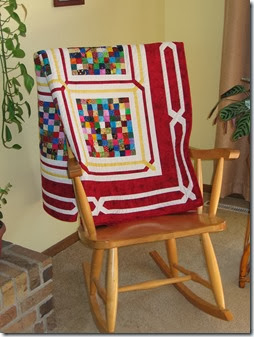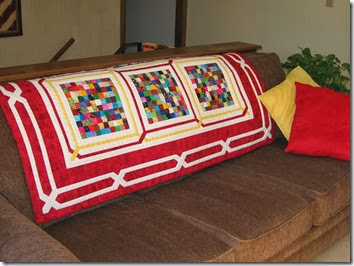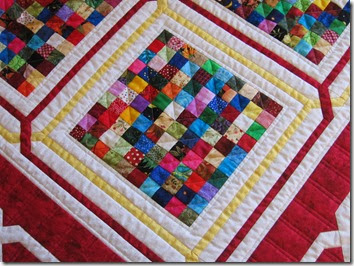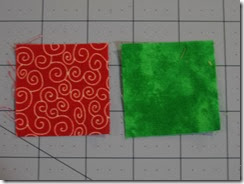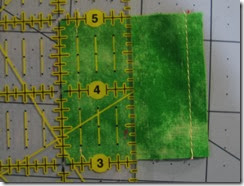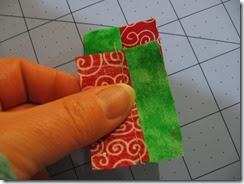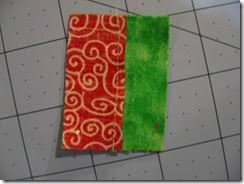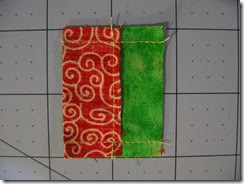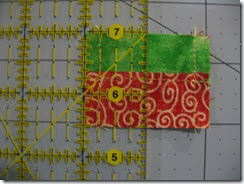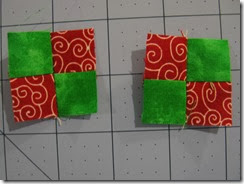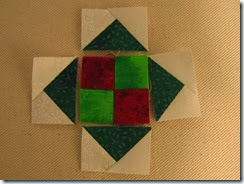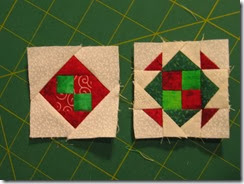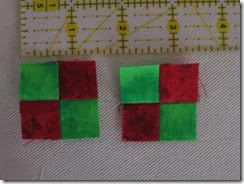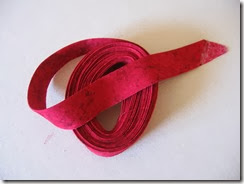 I have seen a few blog posts recently about binding. Most of the discussions recommended cutting strips and joining them individually with diagonal seams. I prefer to make binding using the bias tube method and avoid lots of marking, pinning, pressing individual seams and clipping dog ears. Unlike other posts I’ve seen about this technique, I don’t use scissors or mark any cutting lines. Here’s how I do it.
I have seen a few blog posts recently about binding. Most of the discussions recommended cutting strips and joining them individually with diagonal seams. I prefer to make binding using the bias tube method and avoid lots of marking, pinning, pressing individual seams and clipping dog ears. Unlike other posts I’ve seen about this technique, I don’t use scissors or mark any cutting lines. Here’s how I do it.
Tools
- rotary cutter, ruler and mat
- iron and pressing surface
- pins
- Quilter’s Strip Ticket (optional, see below)
- corner trimming template (optional)
The following two tools make things easier, but they aren’t essential.
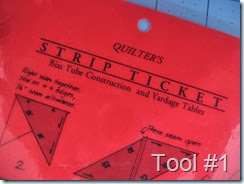
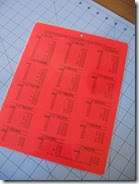
Tool #1 :To figure out what size square of fabric to start with for the amount of binding I need, I turn to my handy-dandy “Quilter’s Strip Ticket”. Besides instructions, it has tables listing what size squares to use to make various amounts of binding of various widths. This was one of my better quilting tool purchases, well worth the $6.00 it cost me. You can find it by doing a web search for it. Alternatively, I have wrestled with the geometry and done the math and I can email you the really ugly equations you can plug numbers into if you are so inclined. The ready made tables are much handier though!
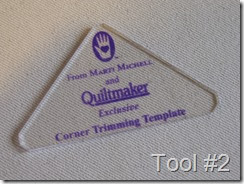
Tool #2: This corner trimming template helps me line up points with edges just right, but as I managed for years before acquiring the template, I can safely say you can use this bias tube method without trimming points with the template.
Here we go:
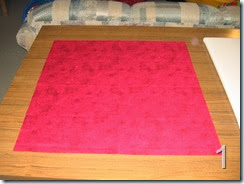
1. Start with a square.
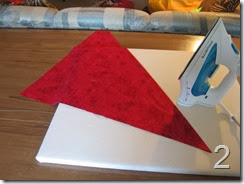
2. Fold the square in half on the diagonal and press the fold. This creates a guide to cut along in the next step if your ruler isn’t long enough to reach across from corner to corner.
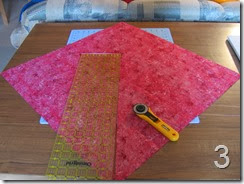
3. Cut the square in half diagonally .
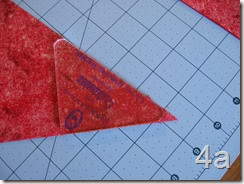
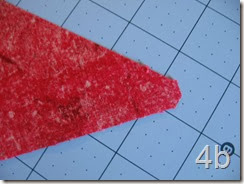
4. If you have a corner trimming template (mine is Marti Michell’s corner trimming template) trim the 45 degree tips of the two resulting triangles. Trimming here will make everything easier to line up in step 6.
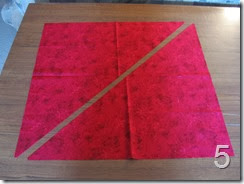
5. Arrange the trimmed triangles as shown above, with the right side of the fabric facing up.

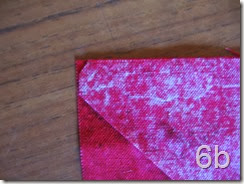
6. Now flip the triangle on the right, top to bottom, turning the fabric wrong side up. The edge that was on the bottom will now be at the top, lined up with the top edge of the other triangle, right sides of the fabric together . If you trimmed the triangle tips earlier you will find that the trimmed tips line up perfectly with the 90 degree corners as shown in 6b. Join the matched edges with a 1/4” seam. Press seam open.
If you do not have a corner trimmer, line up your pieces as shown in the following diagram.
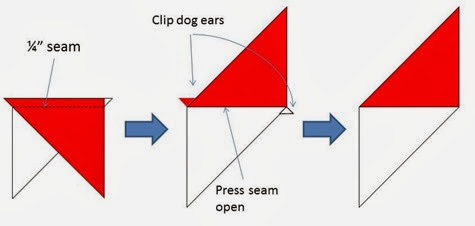
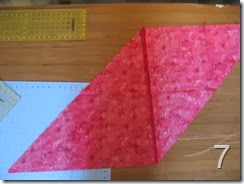
7. Lay out the resulting diamond, fabric wrong face up, with the seam oriented as shown above.

8. Measure the desired width of the binding as shown above. Measure from the bias edge.
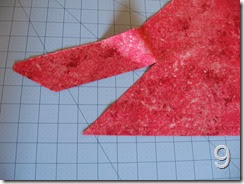
9. Make a cut about 6 inches long.
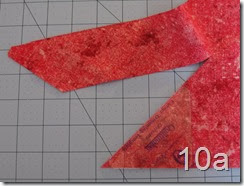
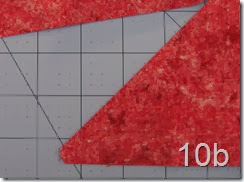
10. If you have a corner trimmer, trim the point as shown. Again, you don’t need to trim, but it would make things easier in step 14.
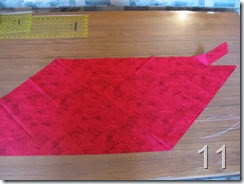
11. Flip the fabric right side up, with the cut dangling strip away from you as shown above.
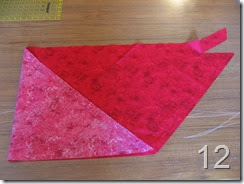
12. Fold the left hand point to the right.
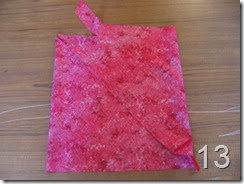
13. Fold the right hand point to the left.


14. Pin the edges that meet in the center. The point formed when you made that dangling strip will be at the top left corner. If you trimmed this point in step 10, it will line up nicely (14b) and you won’t have to guess how much to offset it to allow for the seam allowance. The lower right hand corner will look like photo 14c below.
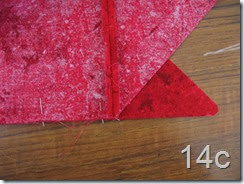
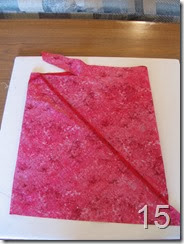 15. Sew the center seam with 1/4” seam allowance and press the seam open.
15. Sew the center seam with 1/4” seam allowance and press the seam open.

16. Turn the tube right side out.
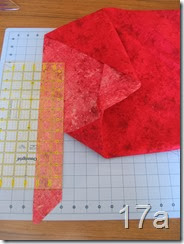
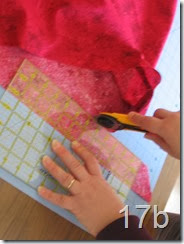
17. Now go back to that dangling strip you started in step 9. Starting where you stopped cutting in step 9, measure the correct width and continue the cut, being careful to keep the rest of the fabric tube out of the way of the rotary cutter.
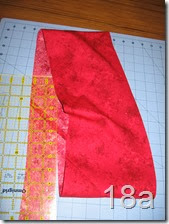
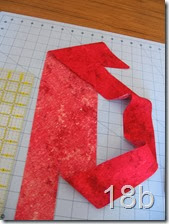
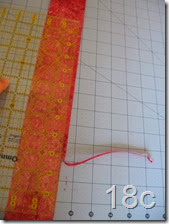
18. Roll the fabric tube and continue cutting the strip. Repeat and keep cutting until you reach the end.
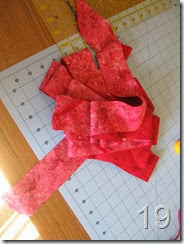
19. You now have one long bias strip.
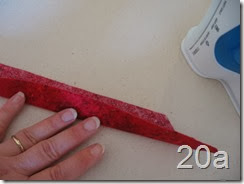

20. Fold the strip in half lengthwise, pressing the fold as you go.

21. Ta-da! Lots of bias binding to bind your lovely quilt. This particular length of binding is going to bind Quilter’s Scrapbook tomorrow.

